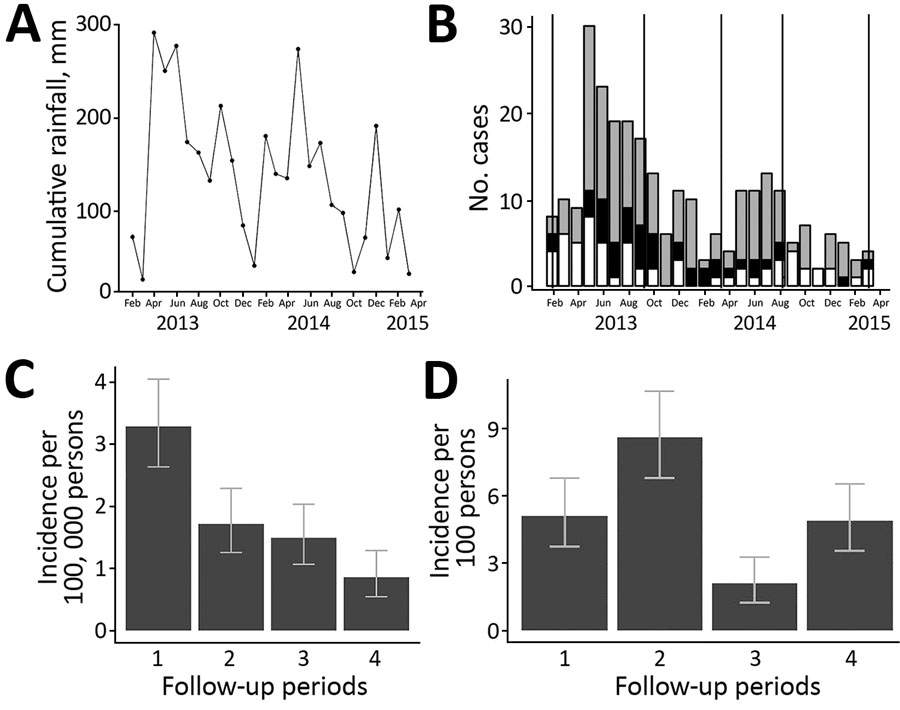Influence of Rainfall on Leptospira Infection and Disease in a Tropical Urban Setting, Brazil
Kathryn P. Hacker
1, Gielson A. Sacramento
1, Jaqueline S. Cruz, Daiana de Oliveira, Nivison Nery, Janet C. Lindow, Mayara Carvalho, Jose Hagan, Peter J. Diggle, Mike Begon, Mitermayer G. Reis, Elsio A. Wunder, Albert I. Ko
1, and Federico Costa
1
Author affiliations: University of Pennsylvania, Philadelphia, Pennsylvania, USA (K.P. Hacker); Yale University, New Haven, Connecticut, USA (K.P. Hacker, J.C. Lindow, J. Hagan, E.A. Wunder, Jr., A.I. Ko, F. Costa); Fundação Oswaldo Cruz, Salvador, Brazil (G.A. Sacramento, J.S. Cruz, D. de Oliveira, N. Nery, Jr., J.C. Lindow, M. Carvalho, J. Hagan, M.G Reis, A.I. Ko, F. Costa); Montana State University Bozeman, Bozeman, Montana, USA (J.C. Lindow); Lancaster University, Lancaster, UK (P.J. Diggle); Johns Hopkins University, Baltimore, Maryland, USA (P.J. Diggle); University of Liverpool, Liverpool, UK (M. Begon); Universidade Federal da Bahia, Salvador (M.G. Reis, F. Costa)
Main Article
Figure 1

Figure 1. Temporal distributions of rainfall, cases of leptospirosis requiring hospitalization, and Leptospira infections in Salvador, Brazil, February 2013–March 2015. A) Cumulative monthly rainfall. B) Monthly citywide cases of leptospirosis requiring hospitalization, which were reported to the national surveillance system and stratified according to confirmed (black bar), probable (gray bars), and unconfirmed (white bars) case status. Vertical lines represent the dates the 5 serosurveys were performed during the 2-year study. C) Cumulative incidence of citywide cases of leptospirosis requiring hospitalization during 4 biannual follow-up periods for a community-based cohort. D) Cumulative incidence of Leptospira infection among a cohort of 861 residents of an urban slum community within Salvador during 4 biannual follow-up periods. Error bars in panels C and D indicate 95% CIs.
Main Article
Page created: January 19, 2020
Page updated: January 19, 2020
Page reviewed: January 19, 2020
The conclusions, findings, and opinions expressed by authors contributing to this journal do not necessarily reflect the official position of the U.S. Department of Health and Human Services, the Public Health Service, the Centers for Disease Control and Prevention, or the authors' affiliated institutions. Use of trade names is for identification only and does not imply endorsement by any of the groups named above.
